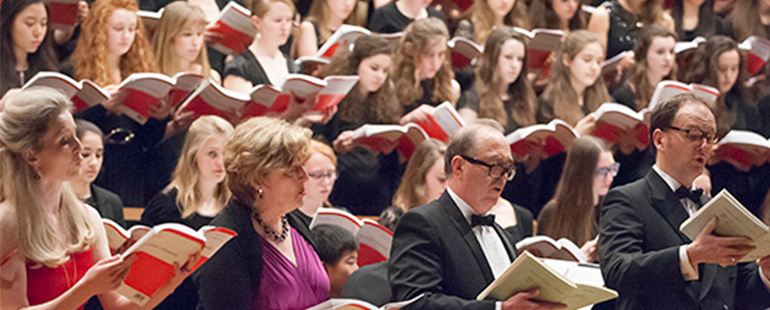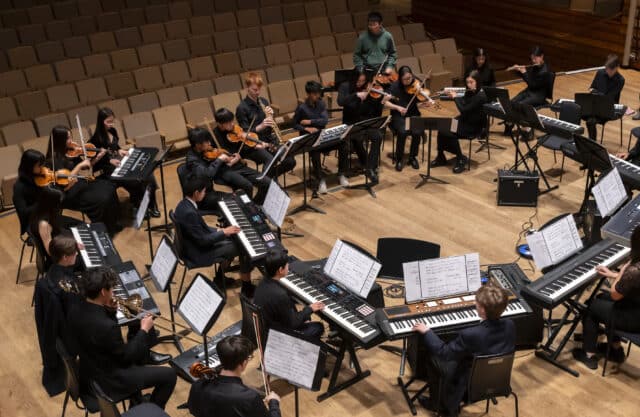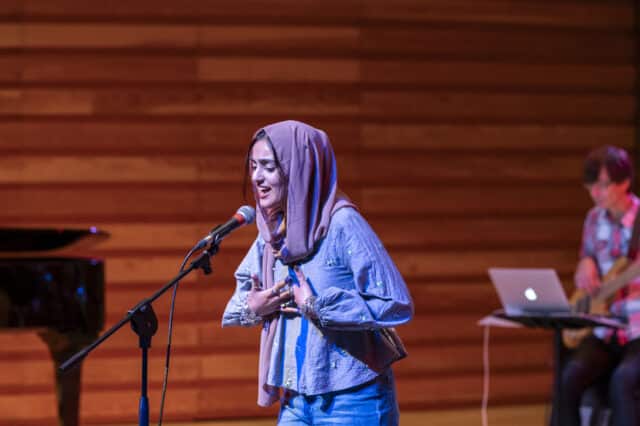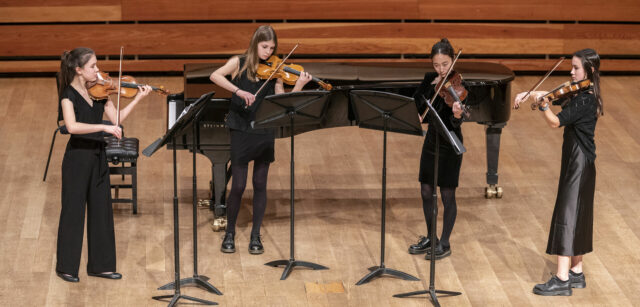30 March 2015
Music at Sevenoaks: Rossini’s Petite Messe Solonelle
Tuesday 24 March 2015 in the Pamoja Hall
Comparatively rarely performed – though perhaps soon to enjoy a well-deserved boost in its popularity, Rossini’s late mass, neither ‘petite’ nor ‘solonelle’ nor especially liturgical in spirit, according to Napoleon III, was, in Tuesday’s performance, a triumph and a revelation.
The opening Kyrie and Christe impressed at once, the 140 voices of the Sevenoaks School Choral Society and Parents’ Choir singing with remarkable clarity and unity of tone under the meticulous direction of Matthew Cook. We heard the original setting for piano and harmonium (in this case the two pianos of Tau Wey and Christopher Atkinson) and although the choral forces were larger than Rossini seems to have envisaged, the balance between chorus and accompaniment was excellent. Not that it was just accompaniment: the wonderfully imaginative and dramatic piano part had a starring role in Tau’s hands – a number of vividly characterised solo passages, and in the Preludio Religioso even a chromatically adventurous movement to itself.
The quartet of soloists each shone in their allotted places: the splendidly operatic Domine Deus for Anthony Dawson’s characterful tenor, the rich bass of Jozik Kotz in the Quoniam, Emily Ward’s soaring soprano in both Crucifixus and the harmonically adventurous O Salutaris – Rossini’s unorthodox additions to the mass.
Rossini’s favourite voice, the contralto (Helen Walker) had her finest moments in the alternately moving and thrilling Angus Dei, which ends the work. Here, as in the joyful fugal Cum Sancto which closed Part I, soloists and chorus blended perfectly. The rigour of the stile antico and the warm humanity of Rossini’s more familiar operatic style were both fully realised here – along with rhythmic and harmonic inventiveness which was a revelation and an incentive to hear the work again!
Paul Harrison



